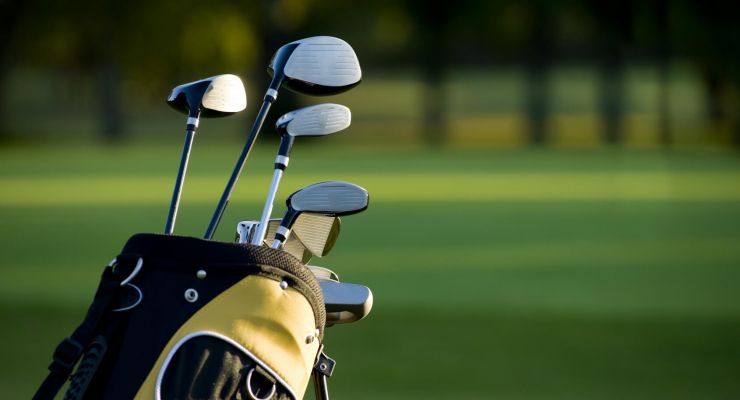When testing new golf clubs, the putter usually gets overlooked. It’s much more fun to test out the latest drivers by seeing how far you can hit balls down the range, but getting a putter that fits your game is the most crucial thing you can do to lower your score. It’s hard to overlook when you realize it’s the club you use most during every round.
As with all golf clubs, technology is advancing to help us save strokes and hit smoother, straighter putts, but knowing which one will work for you is vital before you pick your next putter.
Your stroke path
Before you start looking for a putter that fits your game, you first have to assess your own putting stroke. Depending on whether you have a straight or arced stroke path, you should find a putter that complements your stroke.
It’s simple to identify your stroke path. This can be done on the practice green or even in your own living room. All you have to do to set this up is place two alignment sticks down flat on the ground parallel to each other, slightly further apart than the width of your current putter, then place a golf ball in the center.
Once you have this set up, stand at address to the golf ball as you would on the course, then start your normal putting stroke. Before you take your stroke, focus on where your backstroke is in relation to the alignment sticks. If your backstroke stays between the alignment sticks, then your putting stroke runs on a straight path. If your putter comes inside and over the alignment stick closest to you, then you have an arced stroke path.
Now that you know your own stroke path, you can now pick out the best type of putter to complement your stroke. The type of putter you use can affect your putting path, so select one based on whether you have a straight or arced putting stroke.
Putter balance
Where the weight is placed in the putter head and how the putter balances indicate where its “center of gravity” is in relation to the axis of the shaft. As a general rule, the more weight in the toe, the better it is for an arcing stroke. A face-balanced putter works better for golfers with a straight back and through stroke.
To check the balance of your current putter, balance the shaft on your finger and see how much the toe drops; the more drop the more toe weighted your putter is. A face-balanced putter should balance with the putter face facing the sky.
Putter shaft length
Picking the correct shaft length is also important. This has less to do with your stroke style or path and more to do with your height, arm length and posture, so pick a shaft length that feels comfortable when at address and allows for you to get into the proper posture.
Putter head style
The next thing to look at when picking a new putter is head style. There are many different shapes and sizes when it comes to putter heads, and they are designed to suit various putting strokes and putting abilities. These are the three most common to choose from.
Blade/anser style
This is the simplest putter, with its classic and traditional look, but it’s typically not as forgiving on off-center hits. Blade putters are balanced with a mid to high-toe weight and are suited to golfers with more arced strokes.
Mallet style
Slightly larger and heavier than blade styles, and with more forgiveness, most mallet styles are face-balanced putters, so they suit the straight back and through stroke. The design and putter head shape aids alignment and promotes a smoother straight stroke.
High MOI
High MOI (moment of inertia) putters have a deeper center of gravity, which reduces twisting and improves performance on off-center hits. High MOI putters are great for golfers with inconsistent strokes, as they are mid balanced. This helps golfers who are in between a straight and arc stroke, or don’t have a repeatable putting stroke.
So which putter works for you?
You should try all different types, and decide which is best for you and your game. Make sure you follow these points and you’ll be able to get the best putter to work for you.
- It complements your stroke, whether straight back and through or arced.
- It looks good to your eye — make sure you like the look of your putter.
- It helps you align/aim your putts.
- It gives you confidence to drain those putts.
Now get out there and try out some new putters to improve your game on the green. It will do loads for your score!
— Joseph Mil
